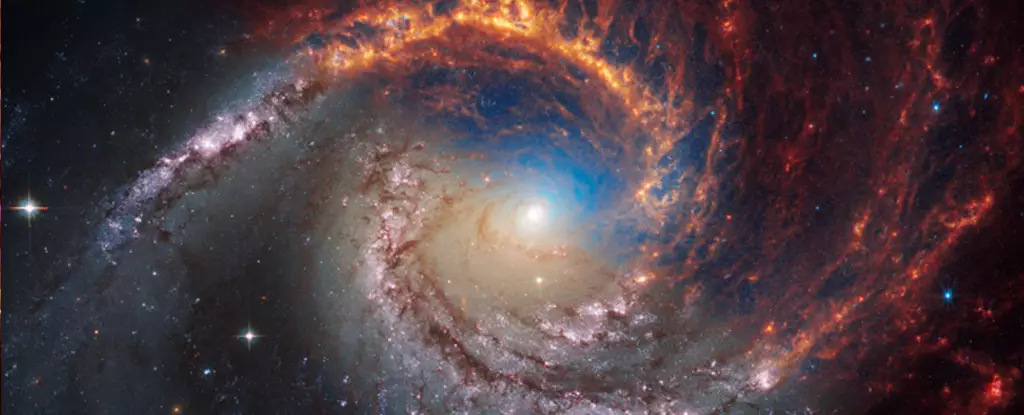If you’re captivated by the wonders of nature, be prepared to have your fascination heightened as you feast your eyes upon the mesmerizing images of spiral galaxies captured by the James Webb Space Telescope (JWST). In a pioneering effort as part of the Physics at High Angular resolution in Nearby GalaxieS (PHANGS) program, the JWST has imaged 19 spirals face-on, revealing an unprecedented level of detail.
The spiral arms of these galaxies, adorned with countless stars, are brilliantly illuminated using infrared light. Moreover, the dense galactic cores that house supermassive black holes are also illuminated in infrared. Through the PHANGS program, which aims to comprehend the intricate interplay between gas, star formation, and galactic structure and evolution, the JWST is contributing tremendously to one of its primary science goals: the study of galaxy formation and evolution.
The JWST is capable of observing both near-infrared (NIR) and mid-infrared (MIR) light, granting it a unique advantage over even the illustrious Hubble Space Telescope. The JWST’s ability to detect infrared light allows it to reveal previously unseen and more detailed features. In these striking high-resolution images, the red color represents the gas and dust emitting infrared light that the JWST excels at capturing. Notably, some images exhibit bright diffraction spikes in the galactic center, indicative of intense light emission. This could suggest the presence of an active supermassive black hole or an extremely high concentration of stars.
Stars closer to the center of a galaxy tend to be significantly older compared to stars found in the spiral arms. As stars move farther away from the galactic center, they become younger. Younger stars appear blue and have cleared away the gas and dust cocoons in which they were born. On the other hand, orange clumps indicate even younger stars that are still actively forming and accreting material.
Intriguingly, the new JWST images were released alongside corresponding views of the same galaxies taken by the Hubble. These comparisons highlight how different wavelengths of light can either obscure or reveal distinct details in galaxies. Throughout the PHANGS program, various telescopes have observed galaxies using visible light, infrared light, ultraviolet light, and radio waves. To make these images comprehensible to the human eye, visible colors are assigned to different wavelengths. For instance, the JWST image of NGC 628 portrays the galaxy’s center with blue hues to emphasize the shorter wavelengths of light detected by the telescope. Conversely, the Hubble image displays the same region in a more yellowish tone, reflecting the longest wavelengths of light detected by the Hubble.
These captivating galaxies share a common spiral structure with our very own Milky Way, making them invaluable subjects for astronomical investigation. Unlike groups of stars moving in unison, the spiral arms of galaxies behave more like traveling waves. Astronomers study these arms extensively as a means to unravel the complex processes involved in galactic construction, maintenance, and the regulation of star formation. Erik Rosolowsky, a professor of physics at the University of Alberta, explains that the spacing between these arms provides crucial insights into a galaxy’s distribution of gas and dust.
The JWST has unleashed an overwhelming torrent of data since commencing science operations, fueling astronomy research for years and beyond. These awe-inspiring images represent only a fraction of a more extensive data release, which includes a catalog of approximately 100,000 star clusters. Erik Rosolowsky from the University of Alberta expresses the vast potential for analysis provided by these images, surpassing the capacity of any single research team to fully explore.
Prepare to be enthralled by the breathtaking images of spiral galaxies unveiled by the JWST. This revolutionary space telescope continues to push the boundaries of our understanding of galactic structure and evolution. With its ability to capture both near-infrared and mid-infrared light, the JWST is revolutionizing how we observe the cosmos. These images, alongside the pioneering efforts of the PHANGS program, offer unprecedented insights into the mysteries of galaxies and provide invaluable clues about the processes leading to their formation and evolution.


Leave a Reply